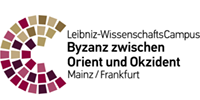The Rise and Decline of Christianity in Southern Jordan. A Case Study of Religious Change in Late Antiquity – 4th-9th Centuries A.D.
For around six centuries (4th to 9th centuries A.D.), the population of the southern part of modern-day Jordan was largely Christian. A Christian presence is first attested since the late 3rd-early 4th century A.D. In the course of the 4th and 5th centuries their numbers grew and reached their peak in the 6th century, when Christians formed the majority of the population of southern Jordan. The Christians also continued for a few generations after the Muslim Conquests of the 630s, but by the 9th century their presence can scarcely be detected any longer. This rise and decline of Christianity in southern Jordan can serve as a test case of repeated change in the religious affiliation of a population in a specific area.
The goal of this project is to trace the history of Christianity in southern Jordan in the period under discussion based on primary historical sources and the results of archaeological investigation of sites with early Christian remains, so far as the evidence permits. Based on the results gained and a comparison with other regions, the special features of the developments in south Jordan can be worked out and the reasons for the large-scale disappearance of the Christians there can be investigated.
The historical sources that can be drawn upon include ecclesiastical records, the writings of Byzantine historians and a corpus of administrative documents on papyrus. In addition around one hundred archaeological sites with evidence for an early Christian presence can be studied to determine their occupational history. For that purpose the preparation of a corpus of the archaeological sites in southern Jordan with early Christian remains is planned.
The results of the project will be presented in a monograph. The Christian presence in southern Jordan will first be studied chronologically from the beginnings in the late 3rd and early 4th centuries until the 9th century. Other chapters will be devoted to specific topics, such as the role of the non-Christian population in the area and their conversion to Christianity or continued allegiance to their own religion; how quickly and how thoroughly the area became Christianized; the urban and rural distribution of Christians; the presence of orthodox and heterodox Christians (i.e. Chalcedonian and Miaphysite Christians); and how the Christian population came to be replaced by Muslims through conversion and migration. A comparison with developments in other regions, along with the corpus of sites will form the conclusion of the monograph. The results will also be integrated into a Geographical Information System (GIS) database and map of the Byzantine Empire in the framework of the WissenschaftsCampus Mainz - Byzantium Between Orient and Occident.
Sponsorsphip
DFG
Publications
- R. Schick, A Christian City with a Major Muslim Shrine: Jerusalem in the Umayyad Period. Pp. 299-318 in Conversion in Late Antiquity: Christianity, Islam, and Beyond, ed. Arietta Papaconstantinou with Neil McLynn and Daniel Schwartz. Farnham: Ashgate, 2015.
- R. Schick, Die Bilderzerstörung des 8. Jahrhunderts in Palästina. Pp. 139-153 in Sakralität und Devianz. Konstruktionen - Normen - Praxis, eds. Klaus Herbers und Larissa Düchting. Stuttgart: Franz Steiner, 2015.
- R. Schick, Jordan. Pp. 391-410 in William Caraher, Thomas Davis and David Pettegrew, ed., Oxford Handbook of Early Christian Archaeology. Oxford: Oxford University Press, 2019.
- R. Schick, Religiöser Wandel in Südjordanien. Von Heiden zu Christen und von Christen zu Muslimen - und all das binnen weniger hundert Jahre, in: Antike Welt 4 (2018), 14-16.
- R. Schick, The Christian Presence in Jordan in the Ninth and Tenth Centuries, in Z. Chitwood and J. Pahlitzsch, eds., Ambassadors, Artists, Theologians. Byzantine Relations with the Near East from the Ninth to the Thirteenth Centuries, BOO 12 (Mainz 2019), 45-54.








![[Translate to Englisch:] [Translate to Englisch:]](/fileadmin/_processed_/c/d/csm_S%C3%BCdjordanien_Schick_Abb.1_99be368e84.jpg)
![[Translate to Englisch:] [Translate to Englisch:]](/fileadmin/_processed_/2/a/csm_S%C3%BCdjordanien_Schick_Abb.2_1d6731b7cb.jpg)




